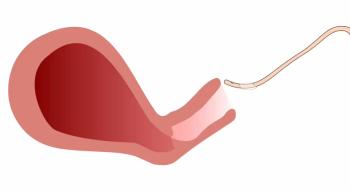
ACOG issues new advice on preventing thromboembolism during C/S
New recommendations from the American College of Obstetricians and Gynecologists (ACOG) urge placing inflatable compression devices on the legs of women undergoing cesarean delivery to prevent thromboembolism and reduce maternal mortality. Practice Bulletin #123, published in Obstetrics and Gynecology (2011; 118[3]:718-729), updates guidelines on preventing, managing, and treating thromboembolism during pregnancy.
New recommendations from the American College of Obstetricians and Gynecologists (ACOG) urge placing inflatable compression devices on the legs of women undergoing cesarean delivery to prevent thromboembolism and reduce maternal mortality. Practice Bulletin #123, published in Obstetrics and Gynecology (2011; 118[3]:718-729), updates guidelines on preventing, managing, and treating thromboembolism during pregnancy.
Pregnancy is associated with a fourfold increase in the risk of venous thromboembolism (VTE) because of physiological changes such as easier clotting, slower blood flow, compression of veins in the pelvis, and reduced mobility. Other risk factors include a personal history of VTE, thrombophilia, obesity, hypertension, and smoking.
“Cesarean delivery is an independent risk factor for thromboembolic events-it nearly doubles a woman’s risk,” said Andra H. James, MD, who helped develop the guidelines. “Fitting inflatable compression devices on a woman’s legs before cesarean delivery is a safe, potentially cost-effective preventive intervention.” However, ACOG warns against delaying an emergency cesarean delivery to apply compression devices. Compression sleeves should be left in place until a woman can walk after delivery or until anticoagulation medication is resumed in women who had been receiving it during pregnancy.
The guidelines also call for prophylaxis with anticoagulants for women who have suffered an acute VTE during pregnancy, have a history of thrombosis, or are at significant risk for VTE during pregnancy and postpartum, including women with high-risk acquired or inherited thrombophilia. Pregnant women with a history of thrombosis should be evaluated for underlying causes to determine whether anticoagulation is appropriate. Most women who take anticoagulants before pregnancy will need to do so during pregnancy and after delivery.
“Because half of VTE-related maternal deaths occur during pregnancy and the rest during the postpartum period, ongoing patient assessment is imperative,” James says. “While warning signs in some women may be evident early in pregnancy, others will develop symptoms that manifest later in pregnancy or after the baby is born.”
Newsletter
Get the latest clinical updates, case studies, and expert commentary in obstetric and gynecologic care. Sign up now to stay informed.















